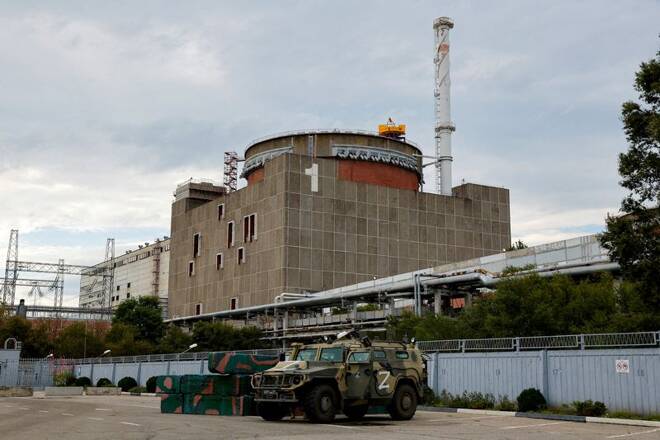Advertisement
Advertisement
Main power line back up at Zaporizhzhia nuclear plant, IAEA says
By:
VIENNA (Reuters) - One of the Russian-held Zaporizhzhia nuclear power plant's four main power lines has been repaired and is once again supplying the plant with electricity from the Ukrainian grid two weeks after it went down, the U.N. nuclear watchdog said on Saturday.
By Francois Murphy
VIENNA (Reuters) -One of the Russian-held Zaporizhzhia nuclear power plant’s four main power lines has been repaired and is once again supplying the plant with electricity from the Ukrainian grid two weeks after it went down, the U.N. nuclear watchdog said on Saturday.
Even though the six reactors at Zaporizhzhia, Europe’s biggest nuclear power plant, have been shut down, the fuel in them still needs cooling to avoid a potentially catastrophic meltdown. That means the plant needs electricity to pump water through the core of the reactors.
The power supply at Zaporizhzhia has been a source of major concern after the last main line went down and then three back-up lines that can connect it to a nearby coal-fired power plant were also disconnected.
That prompted the plant to go into so-called “island mode” where its last operating reactor provided it with power, though that mode is not sustainable. A backup power line was reconnected a week ago, enabling that reactor to shut down, too.
“With the main line’s reconnection yesterday afternoon, the three back-up power lines are again being held in reserve,” the International Atomic Energy Agency watchdog said in a statement.
“The three other main external 750 kV (kilovolt) power lines that were lost earlier during the conflict remain down,” it added.
Russia and Ukraine have blamed each other for shelling at the site of the Zaporizhzhia nuclear power plant (ZNPP) that has damaged buildings and caused the disconnection of power lines.
“While the ZNPP’s power status has improved over the past week – in sharp contrast to earlier this month when all power lines at one stage were down and it depended on its last operating reactor for vital electricity supplies – the general situation for the plant located in the middle of a war zone remains precarious,” the IAEA said.
(Reporting by Francois MurphyEditing by Louise Heavens and Helen Popper)
About the Author
Reuterscontributor
Reuters, the news and media division of Thomson Reuters, is the world’s largest international multimedia news provider reaching more than one billion people every day. Reuters provides trusted business, financial, national, and international news to professionals via Thomson Reuters desktops, the world's media organizations, and directly to consumers at Reuters.com and via Reuters TV. Learn more about Thomson Reuters products:
Latest news and analysis
Advertisement
